Permits For New Homes Are At A 13-Year Peak; Buyers Value Square Footage Over The Sticker Price
by Glen Richardson
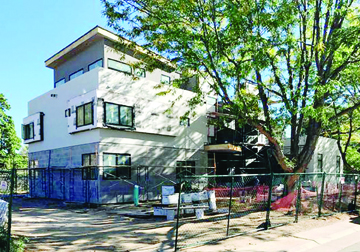
Bold Building Blocks: Builders in the Hilltop neighborhood are finding constant inspiration in replacing spacious old homes with bigger, brash designs.
Despite years of pushback by residents and multiple city ordinances that can delay the process, the scrape and construction of supersized single-family homes in Denver can reasonably be described as a building frenzy. Endlessly larger homes are replacing older homes and tidy rows of bungalows in virtually every Denver neighborhood.
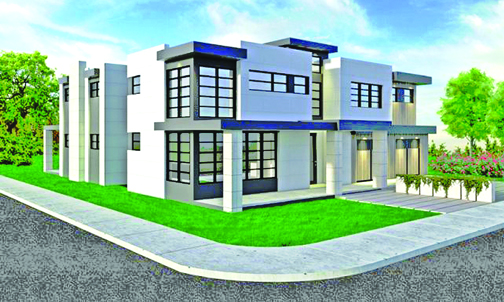
Hilltop Status Symbol: Grand old Hilltop homes are being replaced with new builds such as this house on Fairfax St. designed by architect Collin Griffith and built this year by Forte Distinctive Homes.
Hitting levels that haven’t been seen in years, they are a source of controversy for their impact on gentrification and historic preservation. Furthermore many longtime residents say supersized homes are destroying the character of streetscapes while not respecting the context of the neighborhood. They also complain that as developers maximize the square footage of gigantic homes they not only sacrifice lawn and backyard size but also the views from nearby occupied houses.
Whatever you call it, the process is that developers or individuals find small older houses on large lots, scrape them away, build supersized homes on spec, and then sell them for unholy amounts of money. It’s a business. It’s a neighborhood. It’s a business and a neighborhood. In Wash Park, for example, at 600 S. Franklin St., Forte Distinctive Homes scraped a 1920s triplex and constructed a contemporary three-story home overlooking Washington Park Lake. The 4,800-sq.-ft. four-bedroom home on a corner lot sold in August for $3.66 million.
Permit Predicament
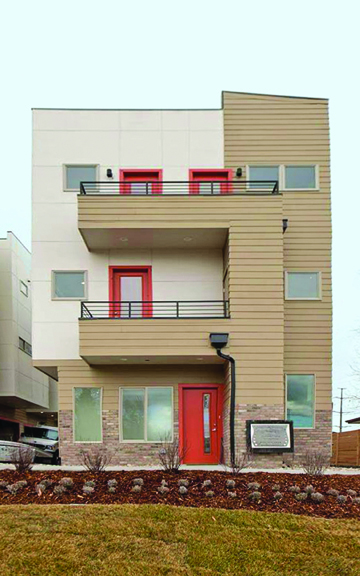
New Look Homes: Sustainable Design Build shows off streets of tall and slim townhomes such as this on streets off of West Colfax Ave.
Permits to build single-family homes are the highest they have been in 13 years. Community Planning & Development issued more than 35,000 permits in the first half of 2018, up roughly 2.1% from last year’s record-breaking frenzy. Realtors say there are currently about 500 new home construction and housing projects underway in Denver. That includes nearly 30 new home and townhome developments in Cherry Creek.
For buyers wanting to purchase a property with the house intact the wait time is often a dilemma. They are being told if they plan to scrape the home to build new, the delay time for a permit could be up to three months due to all the construction activity in the city.
The number of home scrapes completed in the last three years is pushing into new territory. Drive down what are previously untouched streets in a good number of neighborhoods today and you’ll see developers working on new projects that were bypassed for decades.
Changing Colfax
On West 13th St. a block south of West Colfax Ave., every street for 10 blocks has had at least one lot scraped and developed in the last three years. That puts the West Colfax neighborhood — where rows of townhomes are replacing 100-year-old bungalows — at or near the top for scrapes competing with hot spots in Wash Park and Hilltop.
Almost no part of town has had the block-by-block density of scrapes as West Colfax. As many as 1,200 structures have been demolished and replaced with new homes since 2016. Sustainable Design Build’s Mike McCarty has worked on five residential projects on three streets. He has built 34 new townhomes, averaging 1,200-sq.-ft. and priced between $400,000 and $500,000.
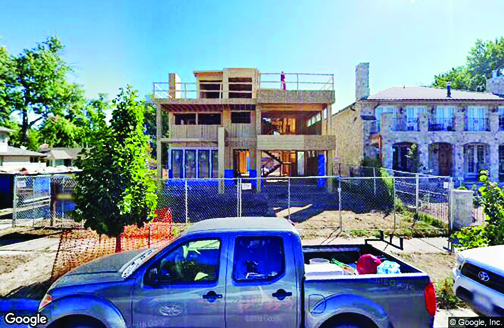
Scrape Off Sequel: Forte Distinctive Homes scraped a Wash Park 1920s triplex and replaced it with this four-bedroom home that sold in August for $3.66 million.
In 2015 he was buying lots with bungalows built between 1920 and 1940, paying $300,000 and $750,000, depending on the lot size. He puts four townhomes on the $300,000 lot and eight homes on those costing $750,000. In the last three years, however, he says the cost for land has risen from $50,000 to $100,000 per finished townhome unit.
Spacious Styles Scraped
Builders in historic Hilltop are scraping away already spacious homes in 22 different architectural styles — grand old homes in an assortment of Tudor, English, Mediterranean Revival, Georgian, Regency and Mid-Century Modern — and replacing them with gigantic newly built “status-symbol” classics.
The area is a one square-mile neighborhood bordered by Colorado Blvd. and Holly St., from 6th Ave. to Alameda. The eastern boundary is irregular, extending to Quebec St. at the north end, and encompassing properties on both sides of Monaco Pkwy. at the south end.
Combining indoor and outdoor space is the trend in these colossal new Hilltop houses that often start at $2.5 million or more. Architects and builders frequently scrape the house being demolished to the foundation, leaving 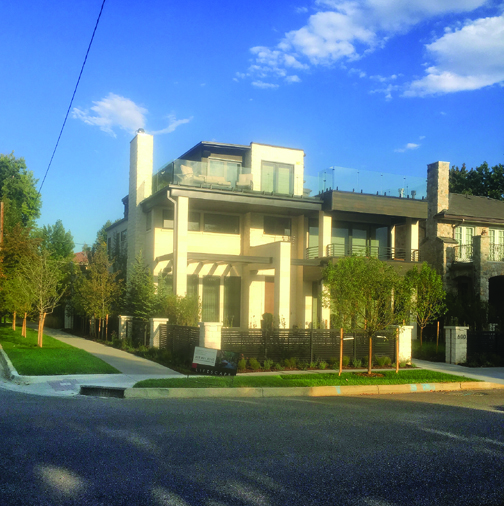 the base intact. That reduces the time to get permits and cuts the cost of installing new water and gas taps.
the base intact. That reduces the time to get permits and cuts the cost of installing new water and gas taps.
Pilfering Park Porches
With tree-lined streets and a 161-acre park and recreational area, Washington Park is one of the Denver’s favorite “hoods.” In the last couple of years, however, countless brick homes with quaint front porches have been scraped away for new builds that are popular and pricey.
The comfortable blend of historic homes adorned with pretty gardens, plants and landscaping, are constantly being replaced by radically bigger homes in more contemporary styles. Sprawling structures, moreover, are replacing lawns and landscaping in sizeable chunks at a good number of new build sites.
The trend is even more noticeable in East Wash Park as scraped lots are chock-a-block packed with big single-family houses. In fact the East Wash Park area now ranks third for the number of scrapes, trailing only upstarts Sloan’s Lake and Berkeley.
Scrape-Offs Stamina?
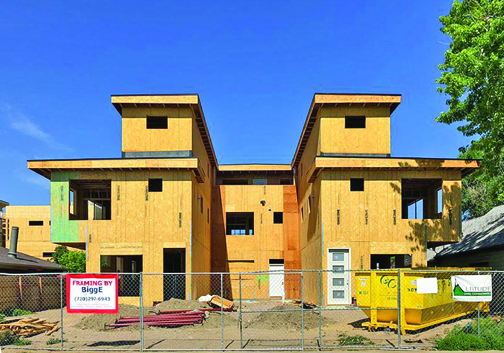
Rows Of Townhomes: Rows of under construction townhomes such as this are replacing 100-year-old bungalows on streets south of West Colfax.
Some homeowners see scrape and build as revitalizing old neighborhoods. Others, however, see it as people being pushed out and the historic nature of neighborhoods being destroyed, which does often happen. For others, scrape-offs can be an artistic and visual concern. Some contemporary architectural styles appear boxy and flaunt bold colors that aren’t attractive to everyone in a neighborhood.
For developers, however, scrape-offs are a business bonus created by an aging housing stockpile that is a lot smaller than the current consumer demands. Builders also argue that older homes are not suitable for today’s lifestyles or energy requirements.
Asking prices for supersized houses will likely continue to ascend, and this alone could eventually price builders out of a market they helped create. Much like cattle that have over-grazed a pasture, they will be forced to move on to even greener neighborhoods.
